Last week I wrote a simple Game of Life variation that runs on a hexagonal grid after viewing an example on Wikipedia. The cells considered are the immediate neighbours. The rules are:
- if a dead cell is surrounded by 2 live cells, the dead cell becomes alive
- if a live cell is surrounded by 3 or 4 live cells, it stays alive
- in all other cases, the cell dies
One of the interesting things about this set of rules is the absence of still life. The reason for this absence is that a cell can only be born under conditions where a live cell would otherwise die. This means that whenever a cell is born it is likely to kill its parents.
Hence the only known stable life forms in this set of rules at the moment are oscillators. No gliders have been found yet.
You can play with my implementation here: http://davidsiaw.github.io/hexlife/
In my search for a glider in this set of rules, I found a bunch of oscillators and decided to record them:
| Picture | Description |
|---|---|
 |
The 2cell is the simplest and most common oscillator. It is left behind by almost any unstable life. |
 |
The Spinner is another common oscillator that has a period of 2. It simply looks like it is spinning. |
 |
The Mouth looks like a spinner but instead of 2nd level adjacent, they are 3rd level adjacent, so it looks like it is always opening and closing |
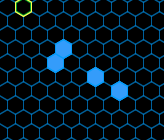 |
The Needle has a period of 2 and flips back and forth. |
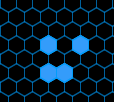 |
The Dancer has a period of 2 and looks like its swinging back and forth. |
 |
The Star looks like a twinkling star. It is quite peculiar in the sense that it has a period of 3. |
 |
The Rotator has a period of 4 and looks like it is spinning in a weird way. |
 |
The Bat is perhaps the most common 4-period oscillator you get from random starts. |
 |
The Snake is a period-4 oscillator that looks like a snake that wiggles around |
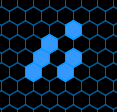 |
The Morpher is really simple but really interesting-looking oscillator. It has got a period of 12 and transforms into all its possible orientations. This means that even though it has no symmetry, it does not matter which way you orient it, it will achieve the same configurations. I call this temporal homogeneity. |
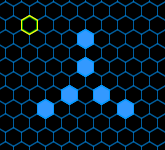 |
The Tristar is a period-12 oscillator that twinkles in a more elaborate way than the star. |
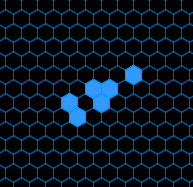 |
The Swimmer is an oscillator with a period of 48. You can actually find it on the Wikipedia page I linked. It seems like a lost fish swimming back and forth. |
If you find more oscillators please leave a comment!